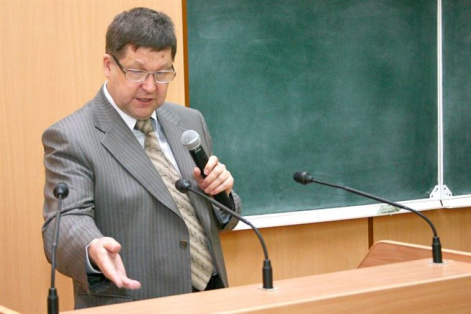Mathematical models of Krasnoyarsk scientists will tell how to prevent a crisis
3 April 2020 г.

In Krasnoyarsk the project “Development of dynamic mathematical models for forecasting critical socio-economic situations and creation of effective numerical methods for solving such models” will involve professors Shuhua Zhang from the Tianjin University of Finance and Economics (China) and Alexander Lapin from the Kazan Federal University. The study will be carried out at the International Laboratory for Mathematical Modeling, which was previously created at the Federal Research Center “Krasnoyarsk Science Center SB RAS” in conjunction with the Siberian Federal University and Tianjin University of Finance and Economics. The project of the Russian Science Foundation favors the laboratory, which are also supported by China.
The project supervisor, Corresponding Member of the Russian Academy of Sciences, Doctor of Physical and Mathematical Sciences, Head of the Mathematical Modeling Research Center, FRC KSC SB RAS and Scientific supervisor of the Scientific and Educational Complex for Economics and Management of the Siberian Federal University Vladimir Shaidurov told about its main objectives and potential practical applications.
What is the main goal of the project?
We are planning to develop sophisticated mathematical models to be used in international practice to optimize the costs and income of economic activity, as well as to achieve socio-economic goals, and forecast critical situations for the economy of individual regions and industries.
A critical socio-economic situation has developed in the whole world and in our country. How can the models you are planning to develop help us to cope with such cases?
Currently, these dynamic models, for example, could help evaluate the effectiveness of different strategies for regional control of coronavirus starting from complete isolation of the population (with a slowdown in the regional economy) to conscious and supported preventive measures (with an active regional economy) depending on the current state and conditions. Of course, such models require adjusting to regional conditions and social response. This is obvious from comparing the progress of coronavirus epidemic in different countries.
It must be clarified that the approaches to successful mathematical modeling of such problems were borrowed from statistical physics, with the name “middle field games” being retained. The “game” of a huge number of physical particles, at first glance, consists in their chaotic interaction between themselves and with an electric or magnetic field. But after the passage to the limit, which is performed on the basis of the probability theory, it is possible to describe this complex medium using differential equations with a small number of given or adjustable parameters.
A similar passage to the limit is being performed in the socio-economic sphere for a large number of agents, buyers, enterprises and users motivated by personal and collective benefits. It is clear that the adjustable parameters and elements of the resulting differential problems are different for physical and socio-economic problems. But this approach is already being used for decision-making in economics, finance and insurance sphere although approaches to the refinement of these models through big data analysis are still being developed.
If to think about the future what will be like as to forecasting and managing critical socio-economic situations? What will be the role of science in decision-making?
In the course of a regular, non-crisis socio-economic state, mathematical models will give more and more accurate results, providing different options for making decisions. Such models will also be useful in forecasting the approach of crisis situations when the exhaustion of a limiting resource should be anticipated, including the lack of financial or organizational means.
In the future, science will play the same role as it does now: it is the eyes and memory for decision-making. The role of the eyes is to see deeper - to better understand the reasons for the current situation and further - to predict the long-term consequences of decisions. And the function of science as a memory is to accumulate knowledge about similar situations and use them to make decisions in the future.
Share:
